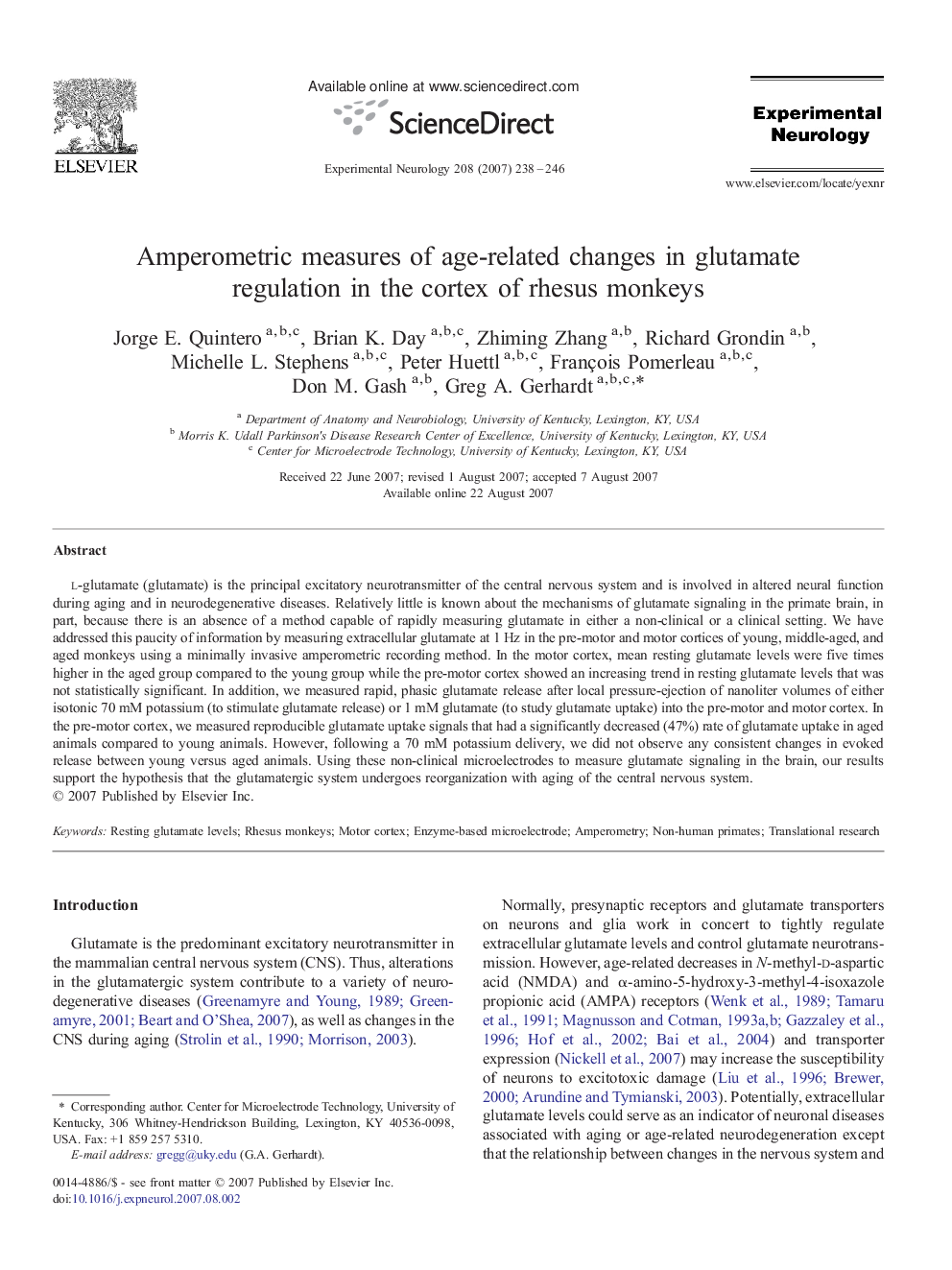| Article ID | Journal | Published Year | Pages | File Type |
|---|---|---|---|---|
| 3056874 | Experimental Neurology | 2007 | 9 Pages |
l-glutamate (glutamate) is the principal excitatory neurotransmitter of the central nervous system and is involved in altered neural function during aging and in neurodegenerative diseases. Relatively little is known about the mechanisms of glutamate signaling in the primate brain, in part, because there is an absence of a method capable of rapidly measuring glutamate in either a non-clinical or a clinical setting. We have addressed this paucity of information by measuring extracellular glutamate at 1 Hz in the pre-motor and motor cortices of young, middle-aged, and aged monkeys using a minimally invasive amperometric recording method. In the motor cortex, mean resting glutamate levels were five times higher in the aged group compared to the young group while the pre-motor cortex showed an increasing trend in resting glutamate levels that was not statistically significant. In addition, we measured rapid, phasic glutamate release after local pressure-ejection of nanoliter volumes of either isotonic 70 mM potassium (to stimulate glutamate release) or 1 mM glutamate (to study glutamate uptake) into the pre-motor and motor cortex. In the pre-motor cortex, we measured reproducible glutamate uptake signals that had a significantly decreased (47%) rate of glutamate uptake in aged animals compared to young animals. However, following a 70 mM potassium delivery, we did not observe any consistent changes in evoked release between young versus aged animals. Using these non-clinical microelectrodes to measure glutamate signaling in the brain, our results support the hypothesis that the glutamatergic system undergoes reorganization with aging of the central nervous system.
